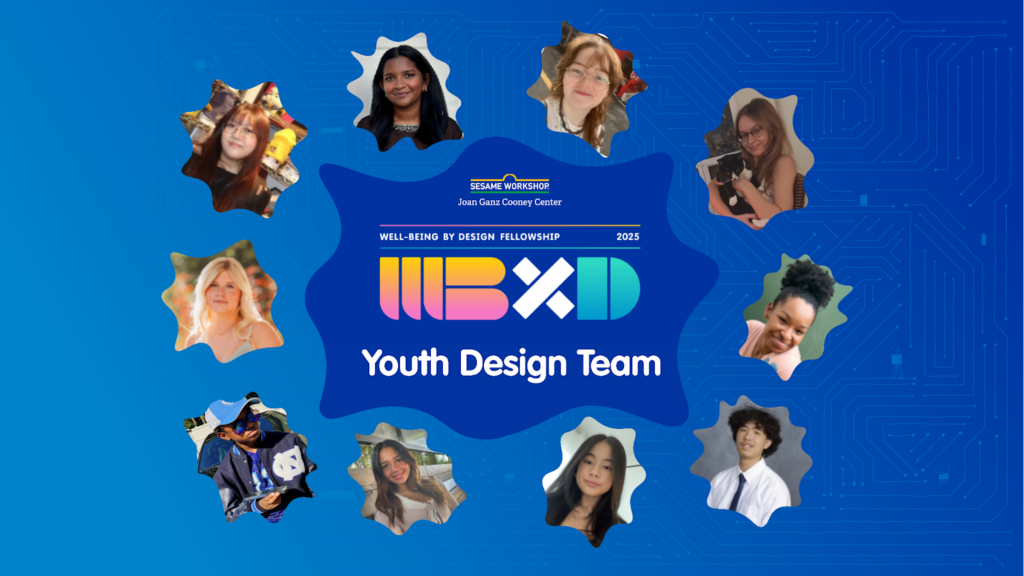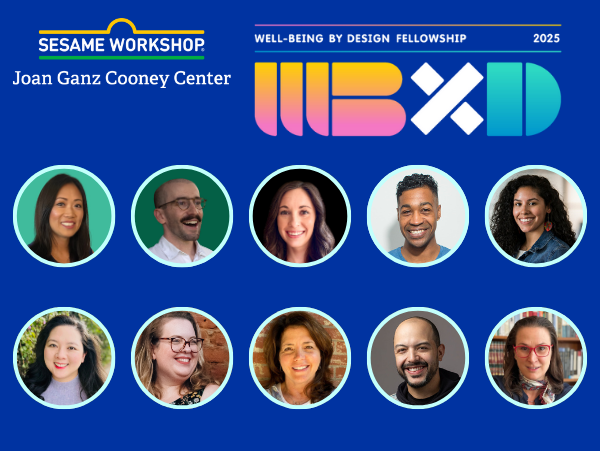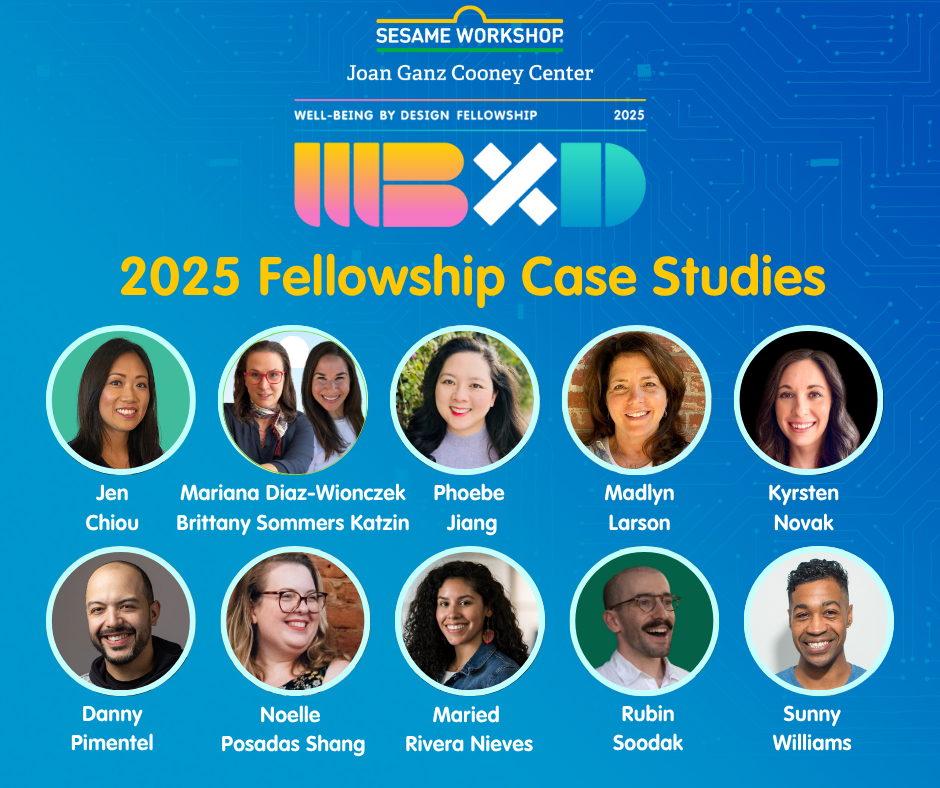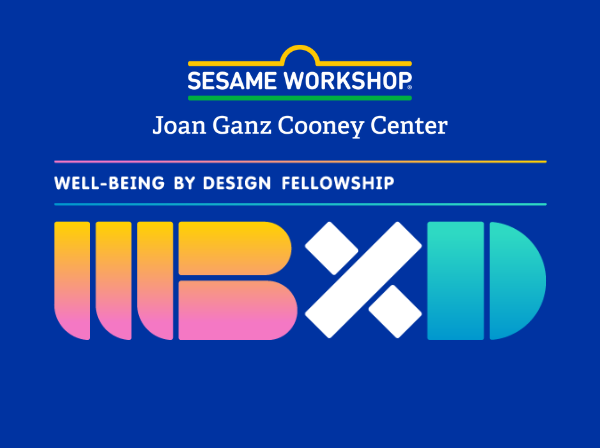The 2025 cohorts of the Well-Being by Design Fellowship and the Youth Design Team have been an amazing success! Our Fellowship program brings together a group of children’s media and technology designers and the Youth Design Team – hosted in partnership with In Tandem – features 20 teens from 10 states in 10th through 12th grades. Throughout the spring, youth designers have participated in panel discussions and workshops to share their experiences and perspectives, and to ask big questions to help the Fellows incorporate well-being principles into their work.

Busting myths, encountering dilemmas
In February, the youth designers and Fellows gathered for the first time for a panel discussion focused on “mythbusting.” The Cooney Center team presented a handful of common myths about kids, media, and well-being, and asked the Youth Design Team to “bust” them. The conversation quickly moved beyond debunking stereotypes about kids and technology and raised new questions and design dilemmas that will shape this year’s Fellowship work.
Myth: “Games and technology are exclusively for entertainment, not learning. If you want to learn anything, the first step should be locking away anything with a screen.”
It took little time for the Youth Design Team to pick apart this myth. Five years after the COVID-19 pandemic shifted learning online, the teenagers in the Youth Design Team see countless ways that technology and learning work together. One youth designer estimated a ratio: “I think every single class I have at school uses like 80% technology and 20% anything else.”
Youth designers described a number of their favorite examples, including Minecraft mods that are designed to teach academic content, or tools for quiz prep and study practice that they regularly use. One youth designer even spelled out the design principles that make effective learning games: high engagement, appropriate challenges, and real-world applications. In contrast, bad learning games have poor feedback systems.
After busting this myth, the conversation pointed towards some of the complex dilemmas that professional designers in the Well-being by Design Fellowship may encounter:
- Games and technology can support more kinds of learning than just academic skills and content. But how should we think about these other kinds of learning? How are they valued? If they aren’t academically-focused, when or why might a teenager engage with them?
- When deliberately focusing on academic skills and content, how are games and technology uniquely valuable? Youth designers described examples of how games and technology can drive engagement and efficiency. Is that the goal? What pedagogies do we lose if we assume these objectives?
Myth: “Even without social media, little kids these days are zombies addicted to their iPads. There’s no such thing as good tech for them.”
Fears of technology addiction loom large in the national conversation — invoking “zombies addicted to their iPads” fits the dominant narrative a little too well. During the panel discussion, the most compelling examples of childhood technology that contrast this narrative came as the youth designers recalled early experiences with PBS Kids games, imaginative play inspired by video games, and bonding with friends and siblings over shared screen time.
The youth designers were clear about what they see as some of the biggest challenges today:
- “Regulating the technology is mostly the parent’s responsibility.”
- “Some limits need to be put on it by parents. But the kids can’t control that.”
- “I have screen time limits myself, and I make other people set the passwords so I can’t bypass them. So if I don’t have the self-control, I don’t think a little kid would either.”
These comments raise an important design question: Is this a supervision issue—or a design issue? The answer, they suggested, is both. Youth proposed a variety of design features to help children stay regulated:
- Built-in time limits
- Daily challenges instead of bingeable content
- Extension activities to continue playing off-screen
- Thoughtful use of child locks and parental controls
All of these design choices could be baked into digital experiences to help children stay regulated and, as one youth designer put it, “remind them that they have a life apart from the game.” But that may be a challenge for parents too, not just designers. As another youth designer described it, if the parents want devices to “do the job of… raising the kid… or you give [a device] to your child just to, you know, suppress them from being loud,” even the most thoughtfully designed digital experiences may not be successful. In reflecting on this dilemma, we are drawn to Sesame Workshop’s and the Cooney Center’s long history of the positive impact of co-viewing, where children and caregivers engage with media together. What could a similar innovation look like in a tablet-driven world?
Continuing the conversation
Mythbusting was only the beginning. The Youth Design Team and Fellowship participants have workshopped real product concepts and features in development. In our final meeting, happening later this week, we’ll turn the tables and invite the teenagers to interview the adults about their careers, how they got started, and what it’s like day-to-day — because, hey, the teens aren’t the only ones with expert perspectives to share.
Sign up for our newsletter to get the latest updates and insights from the Fellowship.


